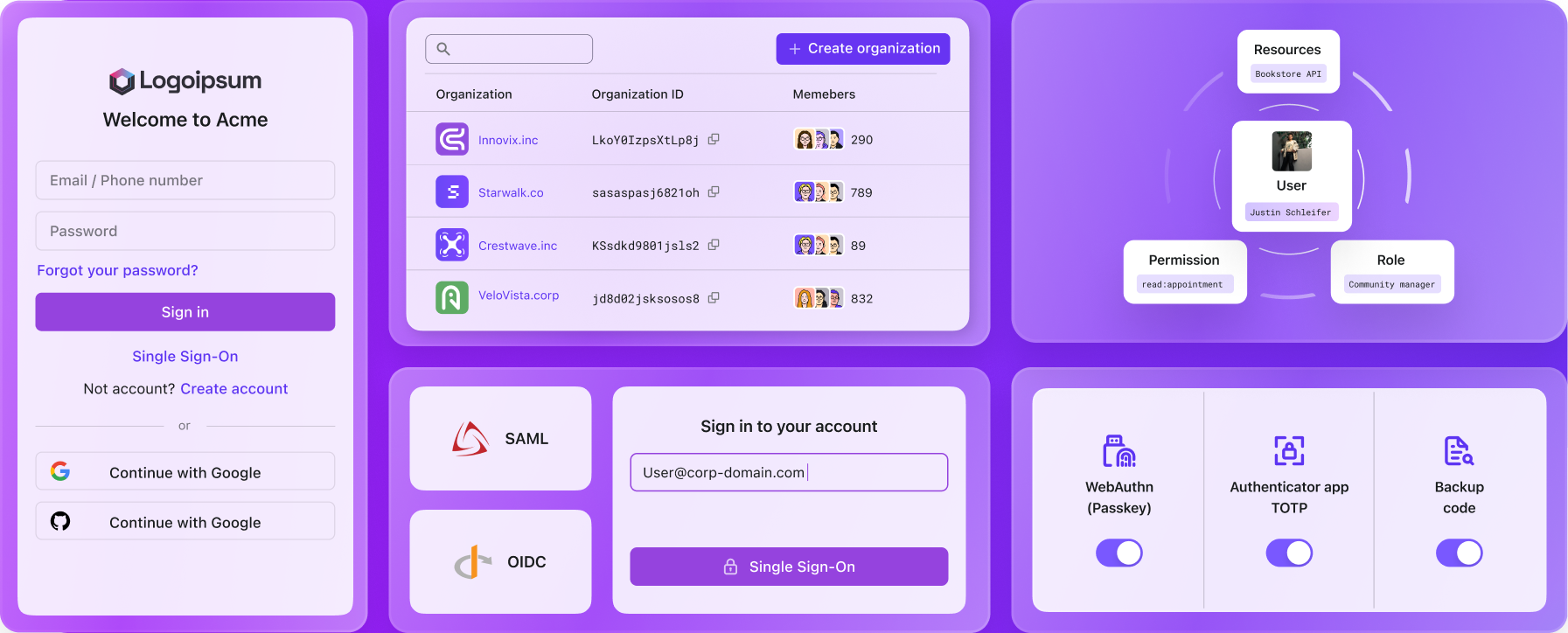What is CLI Auth and the common methods used today
CLI auth is becoming central to modern developer workflows. Logto supports all major CLI authentication methods.
Modern developer workflows rely heavily on command-line tools. From deploying cloud services to running AI agents or managing infrastructure, the CLI has become one of the most powerful interfaces for engineers. But behind every deploy, auth, or run command, there is a critical requirement:
The CLI must know who you are.
This is where CLI auth comes in.
In this article, we’ll break down what CLI auth means, why it matters, and the common authentication methods used across today’s developer ecosystem.
What is CLI Auth?
CLI auth (Command Line Interface authentication) refers to the mechanism a CLI uses to verify the identity of the person or service running commands.
It allows the CLI to:
- authenticate the user
- obtain short-lived and long-lived tokens
- securely access backend APIs
- maintain a persistent login session
If browsers rely on cookies and sessions, CLIs rely on tokens stored locally, combined with OAuth or other standardized auth flows.
In short, CLI auth gives the terminal its own login system so it can safely act on behalf of the user.
Why CLI auth is needed
CLI auth solves several real-world problems:
- Identity — The API backend needs to know who is issuing commands.
- Security — Developers shouldn’t paste raw secrets into terminals or scripts.
- Token lifecycle — CLIs require short-lived access tokens with auto-refresh.
- User convenience — Once authenticated, developers shouldn’t need to repeatedly log in.
- Support for automation — CI/CD pipelines need machine-friendly tokens.
As CLIs grow in capability—especially with AI-driven tools—the need for robust and secure authentication becomes even more important.
Common CLI auth methods
Different platforms use different CLI auth methods depending on security requirements, UX needs, and infrastructure design. Below are the most widely used methods in modern developer tools.
1. OAuth 2.0 Device Code Flow (Most common method)
This is the industry-standard flow used by:
- GitHub CLI
- AWS SSO
- Azure CLI
- Vercel CLI
- OpenAI CLI
- Many AI-native runtimes
How it works
- CLI calls the identity provider to request a device code.
- User is asked to visit a URL and enter a short verification code.
- Browser handles login (password, passkey, SSO).
- After approval, the CLI receives tokens (access + refresh).
- CLI stores tokens locally and uses them for future commands.
Why it’s popular
- Works everywhere (local, SSH, containers).
- Strong security properties.
- No need to type passwords into terminals.
- Supports MFA, passkeys, and enterprise SSO.
Device Code Flow is the default for modern developer tooling because it balances security, flexibility, and user experience.
2. Localhost Redirect OAuth Flow
Used by tools that want a smoother login experience.
How it works
- CLI starts a tiny local server on a random port.
- Browser opens automatically.
- After login, the identity provider redirects back to http://localhost:xxxx/callback.
- CLI receives the OAuth tokens and closes the local server.
Pros
- High-quality user experience.
- No copy-paste step.
Cons
- Not ideal for remote shells or cloud environments.
- Requires the ability to bind localhost ports.
Common in GUI-friendly CLIs or dev tools that want “one-click login.”
3. API keys / Personal access tokens (Legacy but still common)
Some CLIs allow developers to paste an API key or personal access token.
Example
Pros
- Simple.
- Easy to automate.
Cons
- Lower security.
- No MFA.
- Hard to rotate.
- Tokens often have broad permissions.
Most modern platforms are moving away from this model or restricting it to machine-use only.
4. Client Credentials (OAuth2 Client Credentials Flow)
This is the standard way for services and CI/CD jobs to authenticate without user interaction.
Auth providers issue:
- client_id
- client_secret
The service exchanges them for an access token:
Characteristics
- No user involvement
- No browser required
- Short-lived access tokens
- Ideal for backend-to-backend or CI systems
- Integrates cleanly with OAuth2 and RBAC
This is the most widely supported automation auth method across all identity providers.
5. Username + Password input (Rare today)
Typing credentials directly into a CLI:
This method is outdated and not recommended because:
- password input risks leakage
- no MFA support
- cannot integrate with SSO
- poor audibility
Modern tools almost never use this except in offline or legacy enterprise environments.
How CLIs store tokens
Most CLIs store tokens in:
Preferred
- macOS Keychain
- Windows Credential Manager
- Linux Keyring
Fallback
- encrypted local files under ~/.config/toolname
- JSON or TOML config files
Tokens must be:
- short-lived
- refreshable
- revocable
- scoped with roles and permissions
A well-designed token lifecycle is foundational for CLI auth security.
Which method should you use?
If you’re designing a CLI:
| Scenario | Best auth method |
|---|---|
| Human logging in locally | Device Code Flow |
| Human with GUI needs | Localhost OAuth redirect |
| CI/CD | Client credential flow |
| Quick prototype | API keys |
| Enterprise SSO required | Device Code Flow |
Device Code Flow is the modern default because it works everywhere and inherits the security of the browser.
Summary
CLI auth provides the identity foundation behind modern command-line tools.
It allows developers to authenticate securely, obtain tokens, and interact with cloud services or AI runtimes without exposing sensitive credentials.
The most common CLI auth methods include:
- OAuth Device Code Flow
- Localhost OAuth Redirect Flow
- API keys / Personal Access Tokens
- Client credential flow for CI/CD
- Legacy username/password (rare today)
As developer tooling becomes more AI-driven and more work moves into the terminal, CLI auth is becoming a core part of modern identity infrastructure. Logto supports all major CLI auth patterns, with Device Code Flow currently in progress.

